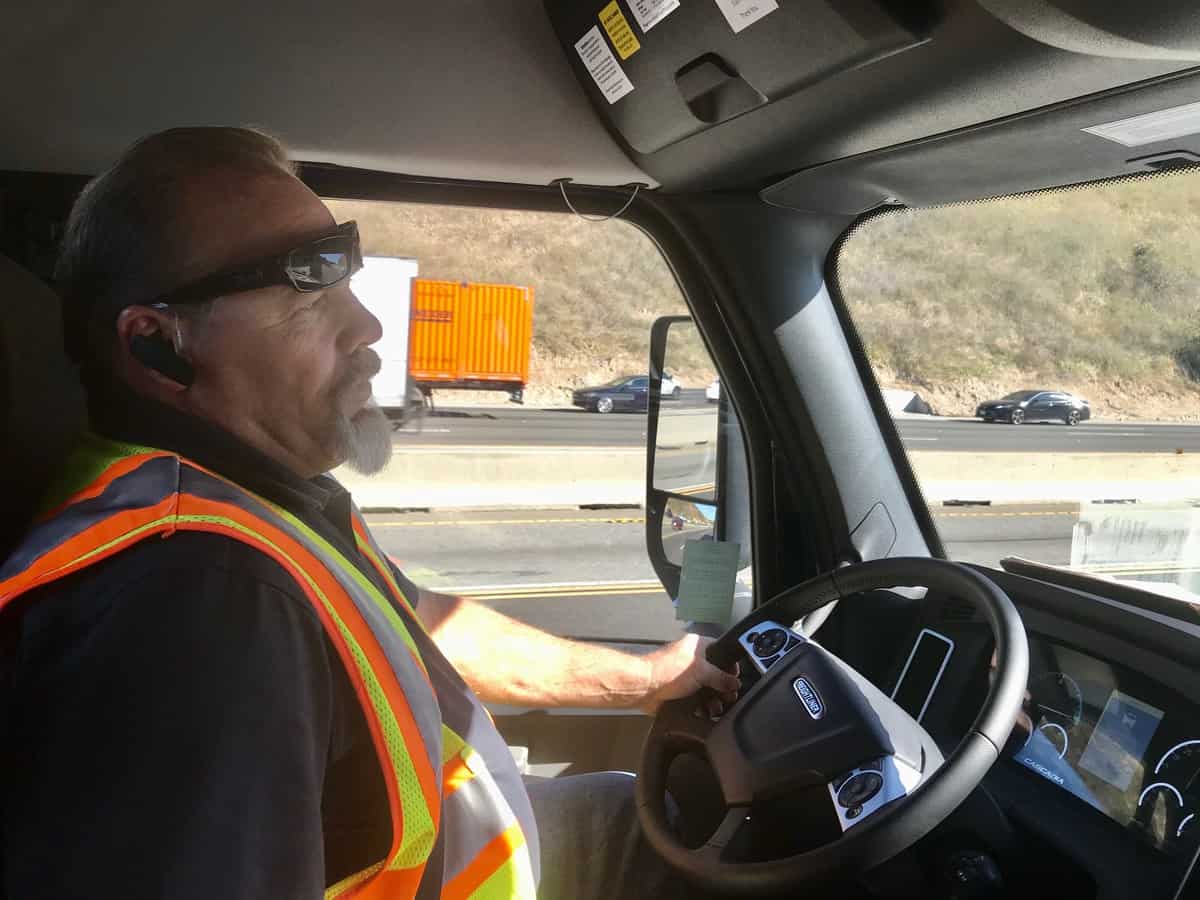Veteran driver switched his diesel truck for the electric one and he likes it

Story by: at FreightWaves
Over two decades and 2 million miles, Karl Williams has driven practically every diesel-powered truck brand on the road. Now behind the wheel of an electric truck, he relishes keeping his place in stop-and-go traffic and misses neither the engine clatter nor the smell of diesel fuel.
“I never imagined I would be driving an electric truck,” the 57-year-old Williams told FreightWaves during a recent drive in a Freightliner eCascadia along California State Route 71.
When NFI Industries, Williams’ employer, became a partner with Daimler Trucks North America’s Freightliner Electric Innovation Fleet, Williams agreed to drive battery-powered drayage routes between Chino in Southern California’s Inland Empire and the ports of Long Beach and Los Angeles.
Unless compelled, he won’t be going back to diesel trucking.
“I drove all kinds of trucks over the years,” he said. ”It’s a lot of work compared to this. These trucks drive themselves. You don’t get beat up.”
Piling up miles
Williams’ typical day consists of two runs: driving an empty drayage trailer to the port and hauling a load back to NFI’s site. As his truck recharges after the first run, he climbs into another eCascadia and repeats the roundtrip of just over 100 miles.
“They want us to put as many miles on each truck as possible,” he said. “That’s the only way they are going to find any issues.”
In about four months, NFI’s fleet of nine electric day cabs has racked up about 50,000 miles.
Taming traffic
So what is different about hauling a trailer by electric power?
“We drive in massive traffic here. As far as [this truck] goes, I barely even use the brake.”
When Williams takes his foot off the throttle, one of three levels of regenerative braking takes over based on his selection. As the truck slows, braking energy flows to the engine, extending how far it can go before recharging. Traditional engine braking slows a diesel truck by retarding the motor only on a steep downgrade,
The eCascadia’s single gear provides immediate power when Williams presses the accelerator.
That matters during all-too-frequent slowdowns on California freeways. When traffic begins moving, Williams keeps pace. In a diesel, he would be left behind, working through gears to get up to speed.
“I would have the space of two diesel trucks in front of me. By the time I get going, five cars jump in front of me,” he said. “With this truck, I can stay right with the cars rather than being dropped back every time we stop and go.”
Even with the truck restricted to 60 mph, Williams said he can shave 15 minutes off the drive from the ports to Chino in heavy traffic.
With advanced driver assistance systems (ADAS) like adaptive cruise control, which keeps his truck at a set distance from the vehicle in front of him, and automatic emergency braking, Williams also drives a safer truck.
Polluted pathway
WIth a passenger riding along on a recent Wednesday morning, Williams discussed the ecological damage to which the trucks he previously drove contributed.
“I see trucks on the road right now that I have to drive behind that are blowing smoke constantly,” he said. “And I’ve got to breathe that all day long. If you drive along the freeway, you look at all the plants. They’re all dead. Nothing’s green anymore.”
California calls neighborhoods closest to the ports “disadvantaged communities” because of pollution from trucks idling while awaiting pickups. The South Coast Air Quality Management District says mobile sources account for more than 80% of the remaining smog-forming emissions in the region.
“You see that white smoke going everywhere on that truck?” Williams asks, gesturing to a semi a few lengths ahead. “It’s all fuel being burned. Nobody needs to breathe that.”
Read the full story HERE at freightwaves.com
Source and credits: freightwaves.com / / iTrucker / Mario Pawlowski




3ladies’